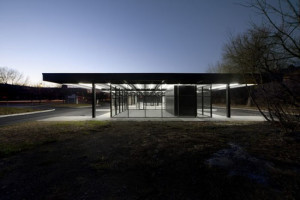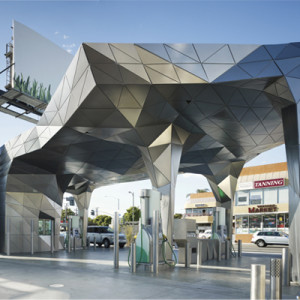One Big Problem With Green Building markets is that they are falsely selling the gratification of environmental stewardship. All the while, overtaking gross market share of real sustainable development. The reason this problem is so serious is because of the desperately needed economic improvements that social and environmentally conscious development will bring.
Some builders and designers get it, others do not.
While this post is not specific to my area of expertise of Landscape design and natural woodworking in NYC and Brooklyn, I believe that the examples I am about to use are able to deliver a concise lesson that is relevant to my industry and others.
The maison des générations or house of generations is a community and cultural center built in Nun’s Island, southeast of Montreal. The space serves as social space for youth and elderly members of the community to co-mingle; sharing time, stories, and enjoying each others presence. This type of inter-generational social interaction is one that fills a gap within most any community. The building itself is a re-purposed gas station, once pumping gas and tuning up cars, now serving the community in another, much needed way. The re-designers incorporated geothermal heating and cooling, and low-impact adaptive reuse to fill this community need.
The BP Helios gas station in Los Angeles California is a LEED certified gas station. The designers incorporated recycled and recyclable building materials, solar panels, and a host of other ‘green’ features. Employees offer tips for improving gas mileage, there are LED light shows and music, and there are some vines planted on the gas station that absorb CO2 and toxic emissions. In the end, BP acknowledges that this gas station is, only “a little better,” and it is still a gas station. BP spent millions on this Hollywood style green stunt; a boost to their public image.
Smog is an ongoing health hazard in Los Angeles, and very few would dare emulate this expensive build-out of a gas station. This was an expensive PR stunt. Had BP instead put some of their greenwashing money into safety checks at some of their oil wells, and put some effort into real environmental consideration, perhaps we wouldn’t all still squirm over the thought of the massive oil ‘leak’ in the BP Gulf of Mexico disaster.
It is perhaps unfair of me to compare a repurposed gas station with a functioning gas station, as their intended use is much different. However, there is a clear divide in social and ecological understandings between the two groups of people who thought these projects were good ideas. Further, it is perhaps unfair of BP to flood media channels with news of their ‘Green’ gas station, shaping the public’s perception of what sustainable development looks like, while casting a large shadow on the real good work i.e.: the maison des générations . What I mean here is that there are many more communities out there that could benefit from a community center with a focus on cross generational cultural exchange, and popular notions of green building don’t usually make space for this type of construction project. Imagine that the conversations that can be had around a game of checkers at a table with a 7-year-old child, a 36-year old single corporate employee, and an 86 year old elder could have the potential to have much more to do with sustainability than BP Helios. Also, the sleek simplicity and symmetry of the re-purposed garage space is aesthetically very pleasing. BP Helios, aesthetically speaking, is another story as well…
Getting to the Root of the Problem: Call building projects what they are!
A small corner of a landscape design market in NYC and particularly Brooklyn is the market I work in and know well. However, I believe that critical markets worldwide in construction, development, and design would be better off if builders and architects simply called a built environment what it is. If the project is a 15 story steel reinforced concrete apartment complex with energy efficient appliances; call it that! If the project is a small garden structure made of local and recycled materials; call it that! When the project is a single-family housing unit constructed of pre manufactured panels and glued-structural components, but uses high-tech air handling, super tight insulation and solar panels; call it that! These construction projects could all be called green homes, LEED Platinum condos, eco-conscious landscaping etc. But that would be generic, open to interpretation, and quite possibly, deliberately misleading.
Green is a meaningless marketing term, that is how I have defined it, and I stick by that. Anyone who is building in truly environmentally conscious ways, but is calling it ‘green,’ would be better served to call their building projects what they actually are. Anyone who is calling their built environments green or sustainable but is not putting in enough real work to achieve that goal, will be embarrassed if they start calling their buildings what they actually are. This is relevant in the landscape design world and pertinent in the green building world at large.
Sadly, ‘Green’ Building has very Little to do with Sustainability.
Green Building is all too often about selling real estate and brand boosting. Sustainability is always about taking care of people, the planet, and its biodiversity. Green building and sustainability are very different, and where the two actually overlap is a much smaller sector than most professionals in relevant industries, including landscape design, care to admit, recognize or even understand.


